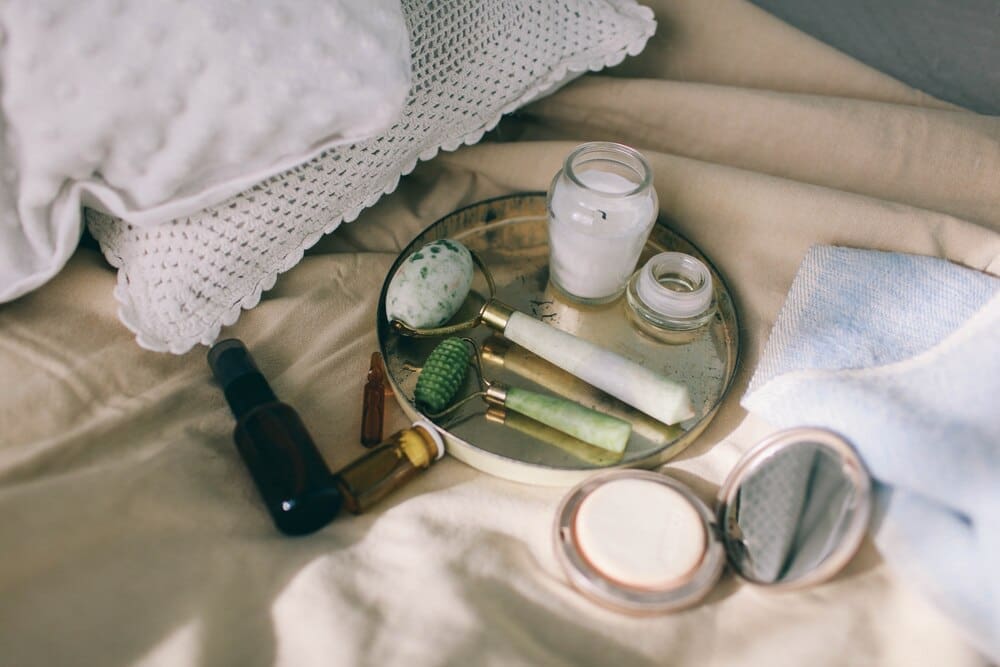In moments of overwhelming stress, anxiety, or emotional panic, the mind can feel like a storm, making it difficult to grasp onto rational thought or abstract coping strategies. A “self-care kit” offers a powerful, tangible solution for anyone needing immediate relief by providing a curated collection of physical items designed to ground you in the present moment. This personalized toolkit, assembled when you are calm, acts as a first-aid box for your emotional well-being, engaging your five senses to interrupt the cycle of distress and guide you back to a state of equilibrium. The simple, proactive act of creating and having this kit ready is a profound exercise in self-compassion, ensuring support is within arm’s reach precisely when you need it most.
Why a Physical Kit? The Psychology Behind Tangible Tools
While techniques like deep breathing or meditation are invaluable, they can feel inaccessible during an acute stress response, such as a panic attack or an anxiety spike. When the brain’s fear center, the amygdala, takes over, our capacity for higher-level thinking diminishes. This is where a physical, sensory-based approach becomes uniquely effective.
The core principle behind a self-care kit is grounding. Grounding techniques are psychological exercises designed to pull your focus away from distressing internal thoughts or flashbacks and anchor you firmly in the present reality. By intentionally engaging your senses—touch, smell, sight, taste, and sound—you activate different parts of your brain, effectively distracting it from the feedback loop of anxiety.
Holding a smooth, cool stone in your hand, for example, forces your brain to process the tactile information of its weight and texture. Inhaling a familiar, calming scent like lavender directly engages the olfactory bulb, which has a uniquely direct connection to the brain’s emotional and memory centers. This sensory input acts as an anchor, tethering you to the “here and now” rather than the “what if” of anxiety.
Furthermore, the very act of building the kit is therapeutic. It is a deliberate, mindful process where you are actively planning for your future well-being. This proactive step empowers you, shifting your role from a passive victim of your anxiety to an active participant in your own care.
Building Your Personalized Self-Care Kit: A Step-by-Step Guide
A self-care kit is deeply personal, and its contents should reflect what you find comforting and soothing. The goal is not to fill a box with generic “relaxing” items, but to curate a collection that resonates specifically with you. Think of it as assembling your team of sensory superheroes.
Step 1: Choose Your Container
The container itself is the first step. It should be something that is both practical and pleasing to you. This could be a simple shoebox, a decorative wooden box, a canvas tote bag, or a small tackle box with compartments.
Choose something that is easy to access and store in a place where you are likely to need it, such as by your bed, under your desk at work, or in your car. The container should feel like a safe and special vessel for your tools.
Step 2: Engage Your Sense of Touch
Tactile sensations can be incredibly effective for releasing nervous energy and providing comfort. Focus on a variety of textures, temperatures, and pressures.
- A smooth stone or crystal: The coolness and smoothness can be very grounding to hold and rub.
- A piece of soft fabric: A small square of velvet, silk, fleece, or faux fur can be soothing to stroke.
- A stress ball or therapy putty: Squeezing and manipulating these items can help channel physical tension and fidgety energy.
- A small, weighted object: A small beanbag or a weighted lap pad can provide calming deep pressure.
- Fidget toys: A simple spinner, cube, or textured ring can occupy your hands and mind, providing a gentle distraction.
Step 3: Soothe with Your Sense of Smell
Scent is one of our most powerful senses, directly linked to memory and emotion. A pleasant, familiar smell can instantly shift your emotional state.
- Essential oil rollerball: A pre-diluted rollerball of a calming scent like lavender, chamomile, bergamot, or sandalwood is easy to apply to your wrists or temples.
- A scented sachet or cotton ball: Place a few drops of your favorite essential oil on a cotton ball and keep it in a small plastic bag, or use a sachet of dried herbs.
- A small tube of lotion: Choose a lotion with a scent you love. The act of mindfully massaging it into your hands combines the senses of touch and smell.
- A favorite perfume sample: A scent that reminds you of a happy time or a loved one can be a powerful emotional anchor.
Step 4: Comfort Through Your Sense of Taste
Engaging your sense of taste can help bring your awareness back into your body. Choose items that are comforting and can be consumed mindfully.
- Herbal tea bags: Calming teas like chamomile, peppermint, or ginger are perfect. The ritual of preparing and sipping the tea is part of the process.
- A piece of dark chocolate: The rich flavor and the way it melts slowly in your mouth can be a mindful experience.
- Hard candies or mints: Sucking on a sour candy or a strong mint can create an intense flavor sensation that cuts through anxious thoughts.
- A small bottle of water: Taking slow, deliberate sips of water can help regulate your breathing and provide a simple, grounding action.
Step 5: Focus with Your Sense of Sight
Visual distractions can help you shift your focus away from your internal world and onto something neutral or positive in your external environment.
- Photographs or postcards: Include a photo of a beloved pet, a happy memory with friends or family, or a postcard of a serene landscape like a beach or forest.
- A glitter jar or snow globe: Watching the glitter or snow slowly settle is a mesmerizing and calming visual exercise.
- A small coloring book and pencils: The simple, repetitive motion of coloring within lines requires gentle focus and can quiet a racing mind.
- A deck of cards with beautiful imagery: This could be a tarot deck, oracle cards, or simply playing cards with art that you enjoy looking at.
Step 6: Calm with Your Sense of Sound
While you may not be able to pack a sound system, you can incorporate auditory tools to either block out overwhelming noise or introduce calming sounds.
- Noise-canceling earbuds: Sometimes, the most calming thing is silence. These can help reduce sensory overload in a loud environment.
- A dedicated playlist: Create a playlist of calming music, nature sounds, or guided meditations on your phone. You can even include a small card in your kit with a QR code that links directly to this playlist.
- A small physical instrument: A miniature rain stick or a small chime can create a gentle, soothing sound that you control.
Beyond the Five Senses: Adding Cognitive and Emotional Tools
Your self-care kit can also include items that engage your thinking mind in a constructive way, helping you reframe your thoughts and emotions.
Journaling and Writing Prompts
Include a small notebook and a pen. The physical act of writing can help externalize swirling thoughts, making them feel more manageable. You can also pre-write some helpful prompts on the first page, such as:
- “List 3 things you can see, 2 things you can hear, and 1 thing you can feel.” (The 5-4-3-2-1 Grounding Technique)
- “What is one thing I know to be true right now?”
- “Describe this feeling as if it were a color, a shape, and a texture.”
Affirmation or Coping Statement Cards
On small index cards, write down coping statements or affirmations that you find helpful. When you’re distressed, it’s hard to generate these on your own, but easy to read them. Examples include:
- “This feeling is uncomfortable, but it is temporary.”
- “I have survived all of my difficult days so far.”
- “I am safe right now.”
- “Breathing in calm, breathing out stress.”
A List of Helpful Contacts
In a moment of crisis, even remembering a phone number can be difficult. Include a card with the names and numbers of a trusted friend, a family member, your therapist, or a crisis hotline like the 988 Suicide & Crisis Lifeline. This removes a barrier to reaching out for help.
How and When to Use Your Self-Care Kit
Your kit is designed for moments of acute distress—when you feel a panic attack coming on, when you receive stressful news, or when you simply feel emotionally overwhelmed. It is a tool for immediate intervention, not a replacement for ongoing mental health care like therapy.
Keep your kit somewhere you can get to it easily. Practice using the items when you are feeling calm, so you become familiar with them. This builds a positive association and makes it easier to reach for the kit when you are actually in distress.
Remember to refresh your kit periodically. Scents may fade, you may eat the chocolate, or you may simply find that different items are more comforting to you over time. Treat it as a living collection that evolves with you.
Ultimately, a self-care kit is a tangible expression of care and preparedness for your own mental health. It is a testament to the fact that you are worthy of support and comfort, especially in your most difficult moments. By creating one, you are giving your future self a powerful gift: a physical anchor in the midst of an emotional storm, ready to guide you back to calmer shores.












